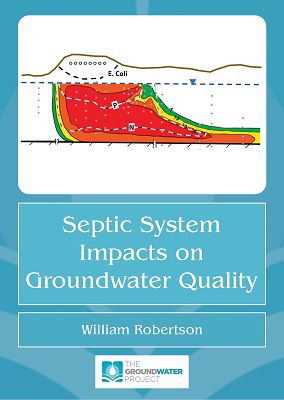Septic System Impacts on Groundwater Quality
Author:
William Robertson – University of Waterloo, Canada
Updated: 03 August 2021
Septic System Impacts on Groundwater Quality
Portuguese translation by Thaís de Paula Marteleto, Daniel Souza dos Santos, Joana de Miranda Alencar, and Paula Cristina Neuburger de Oliveira
Released: 13 June 2023
Impactos de Sistemas Sépticos na Qualidade da Água Subterrânea
Persian translation by Mohammad Hossein Aref
Released: 11 October 2023
تاثیرات†سیستم†سپتیک†برکیفیت†آب†زیرزمین†ی
Book Description
Even though communal sewage treatment systems have been in place in urban centres for centuries, a surprisingly large number of households still discharge their wastewater to on-site treatment systems such as septic systems. Septic systems are used by approximately 25% of the population in the US, and it is estimated that more than 500,000,000 on-site treatment systems are in use worldwide. On-site treatment is used in rural areas, but more recently, has also been promoted in some urbanized areas, because of perceived lower capital costs and lower energy consumption compared to conventional sewage treatment. Domestic wastewater is rich in nutrients, including nitrogen and phosphorus and has other constituents that exceed drinking water criteria, and as such, wastewater discharged to septic systems represents a potential threat to aquatic ecosystems, and imposes a risk of groundwater contamination. However, a number of treatment steps occur in the subsurface at septic system sites, that have the potential to diminish the contaminant risk. This book examines groundwater plume development from septic systems with a particular focus on the fate of nitrogen and phosphorus. Two field sites in particular; one with a household septic system, and the second at a large campground, are used to illustrate plume development and contaminant fate in septic system plumes. Finally, comparisons are made between the degree of treatment provided in the subsurface at septic system sites, to that provided by conventional sewage treatment.


